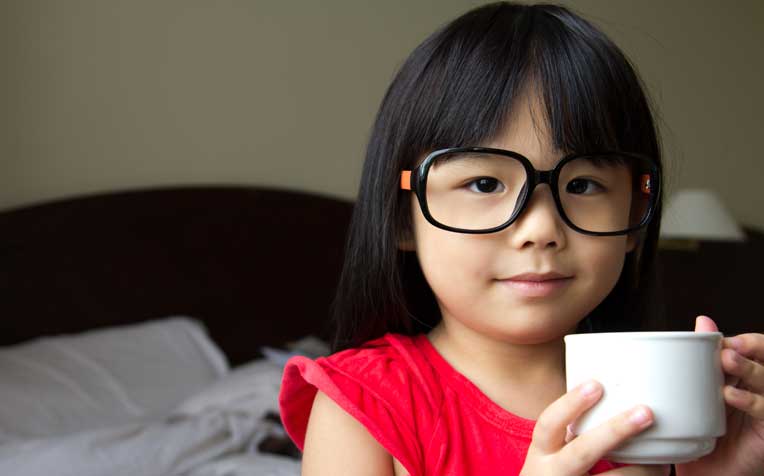
Caffeine intake continues to be on the rise among Singapore teens and children.
Caffeine intake is rising among Singaporean children and teenagers
Over the years a few trends have combined to increase caffeine intake in Singaporean children and teenagers.
Cola drinks and energy drinks have steadily gained in popularity, according to market research data. And coffee chains such as Starbucks have become a trendy place for teenagers to hang out after school.
Some teenagers turn to caffeine for the mental boost they need to cope with the stressful demands of school. As for kids in general, they just seem naturally fond of sweetened and fizzy beverages that happen to be caffeinated. Chocolate beverages can also contribute to caffeine intake for children and toddlers.
Potent stimulant with side effects
In smaller dosage, caffeine can also be found in tea and chocolate. While children don’t generally fancy hot tea, a lot of them sure do enjoy iced tea.
That can amount to a lot of caffeine at the end of the day. A potent stimulant, caffeine can have side effects, such as irritability, anxiety and insomnia. So, how much is too much?
Caffeine intake limitation
“To be safe, children and teenagers should avoid caffeine if possible”, says says Dr Ong Chengsi, Principal Dietitian from the Department of Nutrition and Dietetics at KK Women’s and Children’s Hospital (KKH).
Singapore’s HPB hasn’t issued recommendations regarding caffeine intake in children and teenagers. In fact, food and beverage dietary guidelines of most countries discourage consumption of caffeinated beverages. Canadian guidelines suggest the following maximum caffeine intake levels for children above 4 years old and teenagers:
- 4–6 years: 45 mg/day
- 7–9 years: 62.5 mg/day
- 10–12 years: 85 mg/day
Watch the video!
Potential side effects of caffeine
“However, these levels of caffeine can still potentially affect sleep and behaviour,” warns Dr Ong.
Furthermore, consumption of caffeine in the form of low-nutrient soda or sweetened coffee beverages may replace nutritious beverages such as calcium-rich milk, reducing the nutritional quality of a teen’s diet, says Dr Ong.
Timing of consumption is also important, as it takes up to 6 hours for caffeine effects to wear off. If your child often has problems finding sleep at night, you may want to suggest he or she eliminate caffeinated drinks past a certain hour. Studies have shown that prolonged sleep loss can impact a kid’s ability to thrive in school.
If your children crave fizzy drinks, you could offer them clear carbonated sodas such as Sprite. These are caffeine-free.
Of course, better options include water or milk. Caffeinated or not, each extra soft drink a day gives a child a 60% greater chance of becoming obese, according to a Harvard University study.
See below for the approximate caffeine content of some popular drinks and food items:
| Drink And Food Items | Serving Size | Mg of Caffeine |
|---|---|---|
| Starbucks Brewed Coffee (Grande) | 16 oz (480 ml) | 320 |
| Starbucks Vanilla Latte (Grande) | 16 oz (480 ml) | 150 |
| Red Bull | 8.3 oz (245 ml) | 80 |
| Instant coffee, generic | 8 oz (240 ml) | 93 (range: 27 - 173) |
| Coke Red, regular or diet | 12 oz (1 can) | 54 |
| Pepsi One | 12 oz (1 can) | 54 |
| Snapple, fruit-flavoured tea, regular or diet | 16 oz (480 ml) | 42 |
| Nestea | 12 oz (1 can) | 26 |
| Chocolate bar | 45 g | 9 - 30 |
Source: Centre for Science in the Public Interest
Ref: U24

















 Get it on Google Play
Get it on Google Play